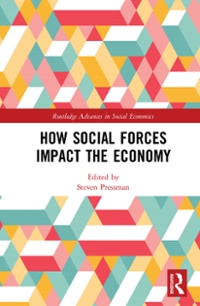Question
Label all axes (P, Q) Label all lines/curves (Demand, Supply) Label all relevant equilibrium points Label intercepts for your linear demand and supply. (Intercepts are
- Label all axes (P, Q)
- Label all lines/curves (Demand, Supply)
- Label all relevant equilibrium points
- Label intercepts for your linear demand and supply. (Intercepts are the points where the lines intersect the axes. For example, if a demand curve intersects the price axis at P=100, indicating that at P=100, 0 units are demanded, you should label that point on the axis with the price of 100).
- Please limit your depictions of supply and demand only to the non-negative values of P and Q (e.g., utilize onlyQuadrant 1 of the coordinate plane). This means that your supply curve will have one applicable intercept on the P-axis, while the demand curve will have two applicable intercepts on the P- and Q-axes.
Question 1
The city of Chambana has a large number of video poker arcades. The demand by patrons for the games (in thousands per week) is Qd = 180 - 4P and the supply is Qs = 2P - 30 where P is the price in cents charged to play a game.
- What is the equilibrium number (quantity) of games played?
- What is the equilibrium price?
Draw a diagram depicting the equilibrium in this market.
Question 2
Continue your analysis of the video poker market in Chambana: demand by patrons for the games (in thousands per week) is Qd = 180 - 4P and the supply is Qs = 2P - 30 where P is the price in cents charged to play a game.
Now suppose that the city of Chambana passes a new law which requires that all video poker arcades contribute m cents to a city charitable fund for each game played on their machines. This is, essentially, an excise tax.
- In a new diagram, show the effect of the new law on the market and explain this effect. (Do not try to give an algebraic solution; just show what happens graphically and provide a description. Please be sure to illustrate how the tax of m cents shifts a specific curve, consistent with the approach we've taken in this course in modeling taxes and subsidies. Clearly indicate the distance by which the curve has shifted.
- Graphically indicate the incidence of taxation on consumers as well as arcade owners (producers). Do not attempt to quantify the incidence of taxation.
Explain what incidence of taxation is and what your graph tells you about the incidence of taxation in this case.
Question 3
Suppose there is a small island nation with no international trade but capable of growing many types of vegetables. Consider the market for tomatoes on this island (and for our purposes, suppose the currency on this island nation is called dollars, a very original name).
Assume the demand for tomatoes of Qd = 50 - 5P while supply is described by Qs = 5P - 25where P is the price in dollars per kilogram of tomatoes; and Q is the quantity of tomatoes, expressed in thousands of kilograms.
- Calculate the equilibrium price and quantity in the market for tomatoes.
- Graphically depict this outcome, labeling the demand curve as D1 and supply curve as S1.
Question 4
Suppose the government of the island has decided to make tomatoes more affordable to consumers by imposing a fixed per unit subsidy.
Thus, start with the original demand (Qd = 50 - 5P) and supply (Qs = 5P - 25) and analyze this new intervention, the subsidy. The subsidy works like this: tomato sellers receive a $4 refund from the government for each kilogram of tomatoes they sell to consumers.
- Write down the equation for the new "effective supply" curve.
- Determine the new equilibrium quantity and equilibrium price.
- What is the price that the consumers will pay for their tomatoes?
- What is the price that the producers will effectively earn for their tomatoes, inclusive of the subsidy?
- How much will the government spend on tomato subsidies in this case in total? (Recall the units of measurement: P is the price in dollars per kilogram of tomatoes; and Q is the quantity of tomatoes, expressed in thousands of kilograms.)
- Produce a new graph depicting the new, post-subsidy equilibrium complete with (solved) values for the new price and quantity. Please include the original supply curve in this graph, in addition to the new "effective supply" curve; and clearly label the shift from the original supply curve to the new "effective supply" curve, graphically indicating the direction and magnitude of the shift. (Since the original supply is labeled as S1, please label the new "effective supply" as S2).
Step by Step Solution
There are 3 Steps involved in it
Step: 1

Get Instant Access to Expert-Tailored Solutions
See step-by-step solutions with expert insights and AI powered tools for academic success
Step: 2

Step: 3

Ace Your Homework with AI
Get the answers you need in no time with our AI-driven, step-by-step assistance
Get Started


